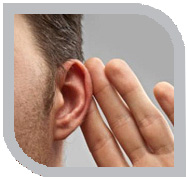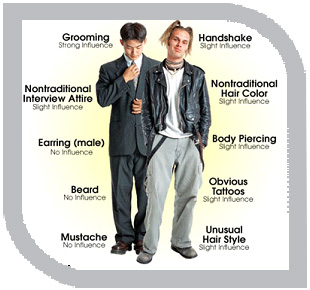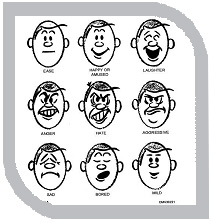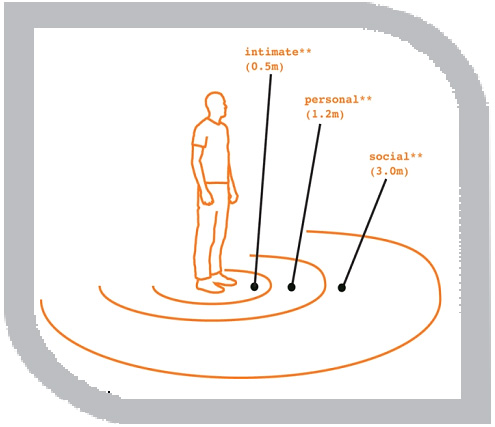 Sounds
Sounds
Sounds such as “ahhh, ummm, ohhh,” uttered with similar eye and facial gestures, communicate understanding and emotional connection. More than words, these sounds are the language of interest, understanding and compassion.
Tone when speaking
Your tone of voice can convey a wealth of information, ranging from enthusiasm to disinterest to anger. Start noticing how your tone of voice affects how others respond to you and try using your tone of voice to emphasize ideas that you want to communicate. For example, if you want to show genuine interest in something, express your enthusiasm by using an animated tone of voice.

Posture
Posture and movement can also convey a great deal of information. Research on body language has grown significantly since the 1970’s, but popular media have focused on the over-interpretation of defensive postures, arm-crossing and leg-crossing. While these non-verbal behaviours can indicate feelings and attitudes, body language is far more subtle and less definitive that previously believed.

Appearance
Our choice of colour, clothing, hairstyles, and other factors affecting appearance are also considered a means of non-verbal communication. Research on colour psychology has demonstrated that different colours can invoke different moods. Appearance can also alter physiological reactions, judgment, and interpretations.

Head movement
It is well known that people use head motion during conversation to convey a range of meanings and emotions.
 Hand movement
Hand movement
Deliberate movements and signals are an important way to communicate meaning without words. Common gestures include waving, pointing, and using fingers to indicate number amounts. Other gestures could be related to culture.
 Eye Contact
Eye Contact
When people fail to look other people in the eye, it can seem as if they are evading or trying to hide something.
On the other hand, too much eye contact can seem confrontational or intimidating.
While eye contact is an important part of communication, it’s important to remember that good eye contact does not mean staring fixedly into someone’s eyes.
Don’t stare; however staring may be interpreted as being hostile or aggressive. If you nod your head from time to time, you acknowledge you are actively listening.
How can you tell how much eye contact is correct? Some communication experts recommend intervals of eye contact lasting four to five seconds.
Aristotle Onassis once admitted that he normally wore dark glasses when negotiating so that his inner thoughts would not be revealed.
- Darting eyes can convey anxiousness or lack of confidence.
- A slow blink can communicate that you don’t enjoy being there.
- Glancing to top right can indicate that you are imagining or making up information.
In African culture direct eye contact is avoided in conversation as it is regarded as disrespectful, arrogant and even aggressive.
Eye Gaze
Looking, staring and blinking can also be important non-verbal behaviours. When people encounter people or things that they like, the rate of blinking increases and pupils dilate. Looking at another person can indicate a range of emotions, including hostility, interest and attraction.
 Facial expression
Facial expression
Facial expressions usually communicate emotions. The expressions tell the attitudes of the communicator.
Facial expressions are responsible for a huge proportion of non-verbal communication. Consider how much information can be conveyed with a smile or a frown. While non-verbal communication and behaviour can vary dramatically between cultures, the facial expressions for happiness, sadness, anger and fear are similar throughout the world.
For example, the eyes tend to reveal happiness or sadness and even surprise. The lower face also can reveal happiness or surprise; the smile, for example, can communicate friendliness and cooperation. The lower face, brows, and forehead can also reveal anger.
 Closeness
Closeness
People often refer to their need for “personal space,” which is also an important type of non-verbal communication. The amount of distance we need and the amount of space we perceive as belonging to us is influenced by a number of factors including social norms, situational factors, personality characteristics, and level of familiarity. For example, the amount of personal space needed when having a casual conversation with another person usually varies between 18 inches to four feet. On the other hand, the personal distance needed when speaking to a crowd of people is around 10 to 12 feet.
Keep your distance
When speaking, don’t get too close, otherwise the listener may feel threatened and become defensive. Of course, that technique is alright if your intention is to intimidate. Maintain a distance that allows you to observe the listeners body language.


Facial expressions ….